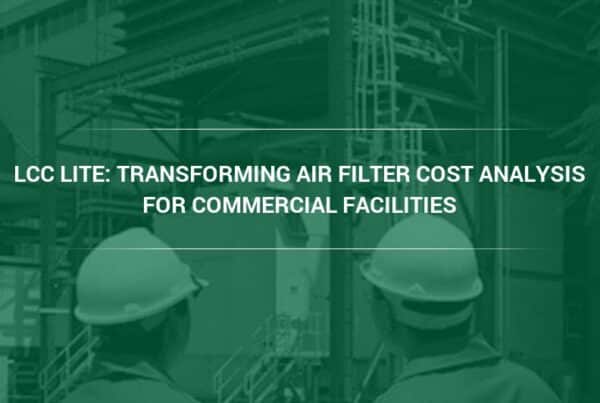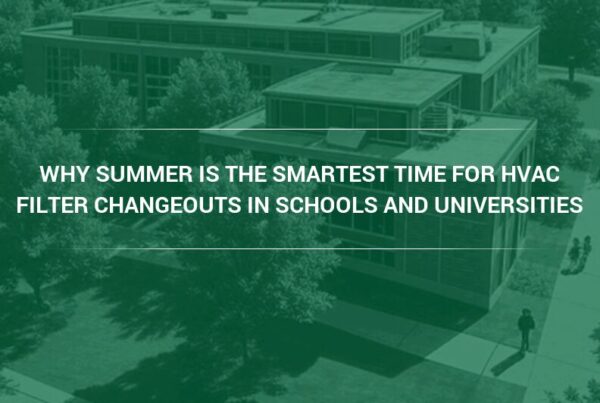Camfil’s products will increase your filtration and energy efficiency based on real life data
Data centers are something we deal with every day of our lives without realizing it. We are, quite literally, surrounded by data centers, both virtually and physically. Our phones, tablets, computers and even our televisions run on technology that relies on data centers to feed us the information we are looking for at any given moment. You probably can’t drive more than 5 miles in any urban area without going past a data center. They are not so obvious from the outside, looking like any common building, but they are there.
Data centers come in all sizes, from some that are made up of just a handful of computers to others that fill the massive spaces of multiple buildings. Some even share the load and work together as one, even though they exist in separate buildings, thousands of miles apart.
One Common Enemy
Regardless of size, purpose, or location, all data centers have one extreme need in common. They all need to keep the equipment they house running cool. Hundreds, or even thousands, of computers running under the same roof generate a massive amount of heat — and excessive heat causes equipment failures.
In order to keep internal equipment cool, data centers employ powerful HVAC systems to cool, clean and move the air in their facilities constantly. To give you an idea of just how much work is done by the ventilation systems in a typical data center, here are some examples to compare. In a typical office, the air is changed between two and six time per hour. In a hospital, where air must be kept fresher and cleaner, it is changed about 30 times per hour. In a typical data center, the air is often changed somewhere between 30 and 50 times per hour. In a large data center, that could mean replacing all of the air in the building about once every 90 seconds.
Technological advances have made it so that the computers used in most applications today are not as sensitive to dirt and dust in the air as they used to be, but it’s still important to filter the air in these environments. Not only will a buildup of dust and particles have a heat trapping blanket-like effect on IT equipment, particles travelling in the air can build up on internal air conditioning components causing losses in efficiency or even failure of HVAC systems. Where data centers are concerned, any rise in heat or dip in efficiency translates to higher operating costs.
Finding The Right Balance
There are several Camfil products that are commonly used to meet the tough standards of air filtration required in data center applications. Depending on the specific needs of each customer, they may be used in varying configurations.
In facilities that don’t require the highest levels of filtration, Camfil 30/30 pleated panel air filters can be installed alone. This is the same basic type of filter that you would see in any home or office HVAC system. It will remove nearly 100% of particles 5 microns in size, or larger, from the air.
In situations where a higher filtration efficiency is needed, the Camfil 30/30 filter would be paired with a Durafil ES filter which will give the air handling system the ability to remove sub-micron sized particles. The Durafil ES filter is available with MERV ratings from 11 to 16. This gives the potential to filter out particles all the way down to .3 microns in size.
Another popular product for data center applications is the Hi-Flo ES filter. This filter provides an excellent balance of filtration and energy efficiency. As one of the only high efficiency filters that can be used without a prefilter, it will remove both large and sub-micron sized particles from the air while producing lower energy consumption than a typical pre-filter/filter configuration.
One of the most important characteristics of all of these products is that they will maintain their efficiency over time. Camfil filters will last longer, filter more efficiently, and provide the lowest total cost of ownership in the industry.
Making An Informed Choice
To make things even easier, Camfil provides LLC Green, which is a powerful software modeling tool that identifies the most effective filter strategy for every operating condition based on “life cycle” cost, which includes the cost of filters, energy, labor, carbon footprint and waste disposal. It indicates the ideal pressure drop at which changeout is recommended to minimize energy use, and maximize the filter life. You’ll be able to see exactly how Camfil’s products will increase your filtration and energy efficiency, based on real life data, with no guesswork at all.
Lynne Laake
Camfil USA Air Filters
T: 888.599.6620,
E:Lynne.Laake@camfil.com
F: Friend Camfil USA on Facebook
T: Follow Camfil USA on Twitter
Y: Watch Camfil Videos on YouTube



